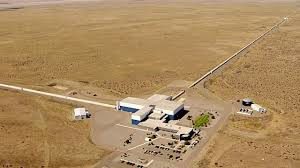What is LIGO? Why is it important?« Back to Questions List
|
LIGO stands for Laser Interferometer Gravitational-Wave Observatory. It is the world’s largest physics experiment laboratory that assesses the physical characteristics of light to detect and study the origin of gravitational waves. Though it is described as a gravitational wave observatory, it differs from other observatories in the world. It is not round in shape and does not have a telescopic dome unlike in other observatories. It does not follow electromagnetic radiation by employing optical or radio telescopes. Laser Interferometer Gravitational-Wave Observatory employs two gigantic laser interferometers located thousands of kilometers apart to study gravitational waves. Despite the word observatory in name, it is one of the highly complicated physics laboratories in the world housing giant particle accelerators. For LIGO, focus is only on invisible gravitational waves. LIGO is a collaborative project that consists of nine thousand researchers from twenty countries. It is funded by U.S National Science Foundation. Australia, Germany and United Kingdom also support financially. California Institute of Technology (Caltech) and the Massachusetts Institute of Technology (MIT) control operations. LIGO was established with the mission of opening the field of gravitational-wave astrophysics through identification of the waves.
In LIGO, Laser interferometry is used to observe distortions occurring between stationary, hanging masses because of passage of gravitational waves. First gravitational wave detectors became operational in 1999. During the first phase between 2002 and 2010, they could not identify any gravitational waves. However, this experience provided inputs for further researches in next phase. During this phase, the instruments were redesigned and interferometers became 10 times more sensitive. This made the equipment to listen 10 time farther away waves, giving access to 1000(10x10x10) times more volume of space. The deeper search for gravitational waves with the revised interferometers started in September, 2015 and within days, on September 14, 2015, the LIGO detectors succeeded in the first detection of gravitational waves, that too originated around 1.3 billion light years back from the collusion of two black holes. Invention of Dynamite and Nobel PrizeNobel Prize and Categories: An Overview
|

